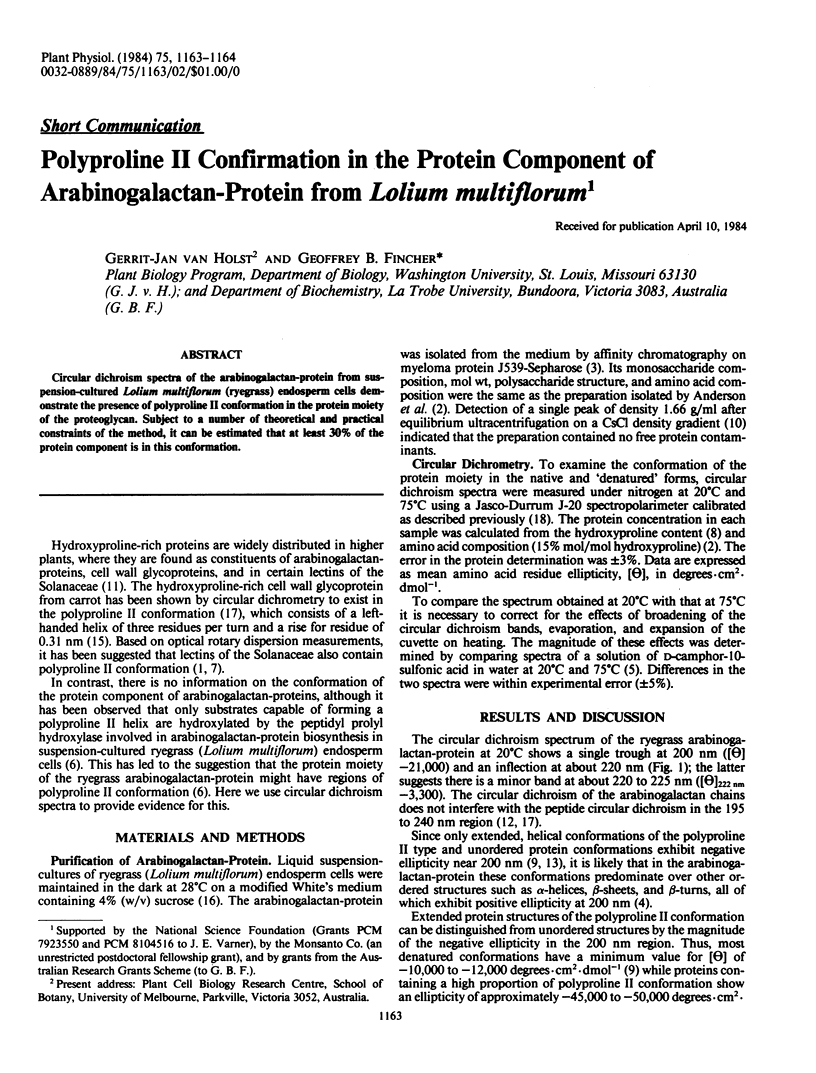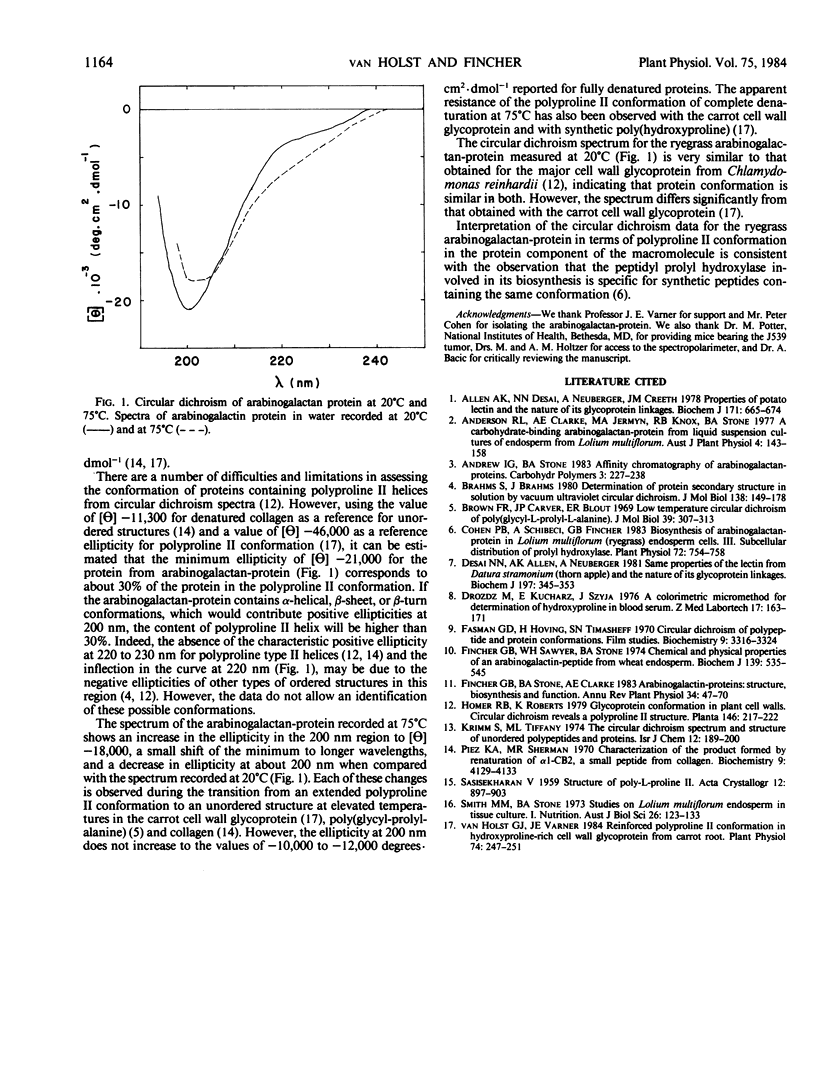Abstract
Circular dichroism spectra of the arabinogalactan-protein from suspension-cultured Lolium multiflorum (ryegrass) endosperm cells demonstrate the presence of polyproline II conformation in the protein moiety of the proteoglycan. Subject to a number of theoretical and practical constraints of the method, it can be estimated that at least 30% of the protein component is in this conformation.
Full text
PDF

Selected References
These references are in PubMed. This may not be the complete list of references from this article.
- Allen A. K., Desai N. N., Neuberger A., Creeth J. M. Properties of potato lectin and the nature of its glycoprotein linkages. Biochem J. 1978 Jun 1;171(3):665–674. doi: 10.1042/bj1710665. [DOI] [PMC free article] [PubMed] [Google Scholar]
- Brahms S., Brahms J. Determination of protein secondary structure in solution by vacuum ultraviolet circular dichroism. J Mol Biol. 1980 Apr;138(2):149–178. doi: 10.1016/0022-2836(80)90282-x. [DOI] [PubMed] [Google Scholar]
- Brown F. R., 3rd, Carver J. P., Blout E. R. Low temperature circular dichroism of poly (glycyl-L-prolyl-L-alanine). J Mol Biol. 1969 Jan;39(2):307–313. doi: 10.1016/0022-2836(69)90319-2. [DOI] [PubMed] [Google Scholar]
- Cohen P. B., Schibeci A., Fincher G. B. Biosynthesis of Arabinogalactan-Protein in Lolium multiflorum (Ryegrass) Endosperm Cells : III. Subcellular Distribution of Prolyl Hydroxylase. Plant Physiol. 1983 Jul;72(3):754–758. doi: 10.1104/pp.72.3.754. [DOI] [PMC free article] [PubMed] [Google Scholar]
- Desai N. N., Allen A. K., Neuberger A. Some properties of the lectin from Datura stramonium (thorn-apple) and the nature of its glycoprotein linkages. Biochem J. 1981 Aug 1;197(2):345–353. doi: 10.1042/bj1970345. [DOI] [PMC free article] [PubMed] [Google Scholar]
- Drózdz M., Kucharz E., Szyja J. A colorimetric micromethod for determination of hydroxyproline in blood serum. Z Med Labortech. 1976 Aug 4;17(4):163–171. [PubMed] [Google Scholar]
- Fasman G. D., Hoving H., Timasheff S. N. Circular dichroism of polypeptide and protein conformations. Film studies. Biochemistry. 1970 Aug 18;9(17):3316–3324. doi: 10.1021/bi00819a005. [DOI] [PubMed] [Google Scholar]
- Fincher G. B., Sawyer W. H., Stone B. A. Chemical and physical properties of an arabinogalactan-peptide from wheat endosperm. Biochem J. 1974 Jun;139(3):535–545. doi: 10.1042/bj1390535. [DOI] [PMC free article] [PubMed] [Google Scholar]
- Piez K. A., Sherman M. R. Characterization of the product formed by renaturation of alpha 1-CB2, a small peptide from collagen. Biochemistry. 1970 Oct 13;9(21):4129–4133. doi: 10.1021/bi00823a015. [DOI] [PubMed] [Google Scholar]
- van Holst G. J., Varner J. E. Reinforced Polyproline II Conformation in a Hydroxyproline-Rich Cell Wall Glycoprotein from Carrot Root. Plant Physiol. 1984 Feb;74(2):247–251. doi: 10.1104/pp.74.2.247. [DOI] [PMC free article] [PubMed] [Google Scholar]


